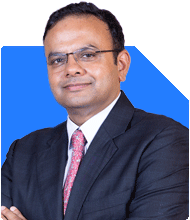Ramalingam Kalirajan |6041 Answers |Ask -Follow
Mutual Funds, Financial Planning Expert - Answered on Jul 15, 2024
He has an MBA in finance from the University of Madras and is a certified financial planner.
He is the director and chief financial planner at Holistic Investment, a Chennai-based firm that offers financial planning and wealth management advice.... more

Total new with investment. My question is lumpsum vs SIP. Im doing 5k or 10k lumpsum every month instead of SIP. Lumpsum Bajaj Finserv Multi Asset Allocation Fund-Direct Plan - IDCW. ?10000 Mirae Asset Nifty MidSmallcap400 Momentum Quality 100 ETF Fund of Fund-Direct Plan - IDCW. ?10000 SBI Automotive Opportunities Fund- Direct Plan - IDCW. ?20000 Motilal Oswal Multi Cap Fund- Direct Plan - IDCW ?20,000
Understanding Lump Sum Investments
Definition and Mechanics
A lump sum investment means investing a large amount of money at once. This approach suits those with a substantial amount ready for investment. It is ideal for investors confident about the market's timing.
Potential Benefits
Immediate Market Participation: Lump sum investing allows your money to grow from the day you invest. It capitalizes on the market’s potential upward movement.
Convenience: With lump sum investing, you only need to make one transaction. This reduces the hassle of making regular investments.
Compounding Benefits: A larger initial investment can yield significant returns over time due to compounding. The earlier your money is in the market, the more time it has to grow.
Potential Drawbacks
Market Timing Risk: Lump sum investing requires timing the market correctly. Investing at a market peak can lead to significant losses.
Emotional Stress: Market volatility can cause anxiety. Seeing a large investment decrease in value can be stressful.
Lack of Diversification: Putting a large amount into one or a few investments can reduce diversification, increasing risk.
Understanding Systematic Investment Plans (SIPs)
Definition and Mechanics
SIPs involve investing a fixed amount regularly. This could be monthly, quarterly, etc. It suits those who prefer investing smaller amounts over time.
Potential Benefits
Rupee Cost Averaging: SIPs mitigate market volatility by averaging the purchase cost over time. This reduces the impact of market fluctuations.
Disciplined Investing: SIPs encourage regular investing. This discipline is crucial for long-term wealth creation.
Flexibility: SIPs are flexible. You can start, stop, increase, or decrease your investments according to your financial situation.
Potential Drawbacks
Missed Opportunities: In a rising market, SIPs may result in lower returns compared to a lump sum investment.
Administrative Effort: Regularly managing SIPs requires more effort compared to a one-time lump sum investment.
Delay in Compounding: Smaller, regular investments mean less initial capital. This could lead to slower growth compared to a lump sum investment.
Evaluating Your Current Strategy
Lumpsum Investments
You mentioned investing Rs. 5,000 or Rs. 10,000 as a lump sum every month. This approach combines elements of both lump sum and SIP. It's worth noting the funds you have chosen for these investments.
Actively Managed Funds vs. Direct Funds
Disadvantages of Direct Funds
Direct funds involve investing directly without intermediaries. While they have lower expense ratios, they require significant market knowledge and time.
Lack of Guidance: Without professional advice, you might make suboptimal investment choices.
Increased Responsibility: You must manage your portfolio, monitor performance, and make necessary adjustments.
Market Research: Direct investing demands extensive research and understanding of the market.
Benefits of Regular Funds Through a CFP
Advantages of Actively Managed Funds
Actively managed funds involve professional managers who select securities to outperform the market.
Expertise: Fund managers have the expertise to navigate market complexities and make informed decisions.
Performance: Actively managed funds aim to outperform benchmarks, potentially offering higher returns.
Flexibility: Fund managers can adapt to market changes, rebalancing portfolios to optimize returns.
Certified Financial Planner (CFP) Guidance
Investing through a Certified Financial Planner offers several benefits.
Personalized Advice: A CFP provides personalized investment strategies aligned with your financial goals.
Comprehensive Planning: CFPs consider your overall financial situation, including risk tolerance, time horizon, and financial goals.
Ongoing Support: Regular reviews and adjustments ensure your investment strategy remains aligned with your goals.
Comparing Lumpsum and SIP
Market Conditions
The effectiveness of lump sum versus SIP depends on market conditions. In a bullish market, lump sum investments often outperform SIPs. Conversely, in a volatile or bearish market, SIPs offer better risk management.
Risk Tolerance
Your risk tolerance plays a crucial role. If you are comfortable with market volatility, lump sum investments might suit you. However, if you prefer steady, less volatile growth, SIPs are a better choice.
Financial Goals
Align your investment strategy with your financial goals. If you aim for long-term wealth creation with disciplined investing, SIPs are beneficial. For immediate market participation and potentially higher returns, lump sum investments are suitable.
Your Current Investments
You have invested in various funds with a mix of lump sum and regular contributions. Let's assess the potential and risks.
Multi-Asset Funds
Multi-Asset Funds
Multi-asset funds diversify investments across asset classes, balancing risk and return.
Benefits
Diversification: These funds spread investments across equities, debt, and sometimes commodities, reducing risk.
Risk Management: By investing in different asset classes, multi-asset funds manage market volatility effectively.
Professional Management: Fund managers actively rebalance the portfolio to maintain the desired asset allocation.
Drawbacks
Complexity: The performance depends on the correct allocation across different assets, which can be complex to manage.
Higher Costs: These funds may have higher management fees due to active management and frequent rebalancing.
Performance Variability: Returns can vary significantly based on market conditions and the fund manager's decisions.
Sector-Specific Funds
Investing in sector-specific funds, such as those focusing on the automotive industry, comes with its own set of benefits and risks.
Benefits
High Growth Potential: If the sector performs well, these funds can provide substantial returns.
Focused Investment: They allow you to invest in sectors you believe will outperform the market.
Expertise: Fund managers with deep knowledge of the sector can make informed investment choices.
Drawbacks
High Risk: These funds are more volatile due to their focus on a single sector.
Market Dependency: Their performance is highly dependent on the sector’s performance.
Lack of Diversification: Concentrating investments in one sector increases risk compared to diversified funds.
Multi-Cap Funds
Multi-cap funds invest across different market capitalizations, providing a balanced exposure to large-cap, mid-cap, and small-cap stocks.
Benefits
Diversification: They offer exposure to a wide range of stocks, balancing risk and return.
Flexibility: Fund managers can shift allocations between different market caps based on market conditions.
Potential for High Returns: These funds can capitalize on the growth potential of mid and small-cap stocks while maintaining stability with large-cap stocks.
Drawbacks
Management Risk: The fund's performance depends on the manager's ability to select the right mix of stocks.
Market Volatility: Exposure to mid and small-cap stocks can lead to higher volatility.
Higher Costs: Active management may result in higher expense ratios.
Analyzing Your Strategy
Your current strategy involves a mix of lump sum and regular investments in diverse funds. Here’s a detailed assessment:
Pros of Your Approach
Balanced Exposure: Investing in different funds provides diversification across asset classes and sectors.
Growth Potential: Sector-specific and multi-cap funds offer the potential for high returns.
Risk Management: Multi-asset funds help manage risk through diversification.
Cons of Your Approach
Market Timing: Regular lump sum investments require careful market timing, which can be challenging.
Volatility: Sector-specific funds can introduce higher volatility into your portfolio.
Management Complexity: Handling multiple funds with different strategies can be complex and time-consuming.
Recommendations
Focus on Professional Guidance
Consider leveraging the expertise of a Certified Financial Planner (CFP). A CFP can provide tailored advice, aligning your investments with your financial goals.
Personalized Strategy: A CFP can help create a personalized investment strategy, balancing risk and return.
Regular Reviews: Ongoing reviews ensure your portfolio remains aligned with your goals.
Expert Management: Professional management can navigate market complexities, optimizing your investments.
Consider Actively Managed Funds
While direct funds have lower expense ratios, actively managed funds through a CFP offer significant benefits.
Expert Insights: Fund managers bring expert insights and experience to the table.
Higher Returns: Actively managed funds aim to outperform the market, potentially offering higher returns.
Adaptability: Fund managers can adapt to market changes, rebalancing the portfolio to optimize returns.
Assess Your Risk Tolerance
Your risk tolerance should guide your investment strategy. Ensure your portfolio aligns with your comfort level regarding market volatility and potential losses.
Risk Assessment: Regularly assess your risk tolerance and adjust your investments accordingly.
Diversification: Maintain a diversified portfolio to spread risk across different asset classes and sectors.
Long-Term Focus: Focus on long-term growth, avoiding short-term market fluctuations.
Evaluate Market Conditions
Keep an eye on market conditions and adjust your investment strategy accordingly.
Market Trends: Stay informed about market trends and economic indicators.
Adjust Strategy: Be prepared to adjust your investment strategy based on changing market conditions.
Regular Monitoring: Regularly monitor your investments to ensure they remain aligned with your financial goals.
Final Insights
Choosing between lump sum and SIP investments depends on various factors, including market conditions, risk tolerance, and financial goals. Your current strategy of mixing lump sum and regular investments in diverse funds shows a balanced approach. However, consider leveraging the expertise of a Certified Financial Planner to optimize your investments further. Regular reviews, expert insights, and a focus on long-term growth can help you achieve your financial goals effectively.
Best Regards,
K. Ramalingam, MBA, CFP,
Chief Financial Planner,
www.holisticinvestment.in
You may like to see similar questions and answers below
Abhishek Dev |57 Answers |Ask -Follow
Financial Planner - Answered on Aug 29, 2023
Ramalingam Kalirajan |6041 Answers |Ask -Follow
Mutual Funds, Financial Planning Expert - Answered on May 26, 2024
Sanjeev Govila |458 Answers |Ask -Follow
Financial Planner - Answered on Jan 22, 2024
Ramalingam Kalirajan |6041 Answers |Ask -Follow
Mutual Funds, Financial Planning Expert - Answered on Apr 27, 2024
Ramalingam Kalirajan |6041 Answers |Ask -Follow
Mutual Funds, Financial Planning Expert - Answered on May 08, 2024
Dr Dipankar Dutta |482 Answers |Ask -Follow
Tech Careers and Skill Development Expert - Answered on Aug 25, 2024
Dr Dipankar Dutta |482 Answers |Ask -Follow
Tech Careers and Skill Development Expert - Answered on Aug 25, 2024
Dr Dipankar Dutta |482 Answers |Ask -Follow
Tech Careers and Skill Development Expert - Answered on Aug 25, 2024
Nayagam P P |3545 Answers |Ask -Follow
Career Counsellor - Answered on Aug 25, 2024
Nayagam P P |3545 Answers |Ask -Follow
Career Counsellor - Answered on Aug 25, 2024
Vivek Lala |277 Answers |Ask -Follow
Tax, MF Expert - Answered on Aug 25, 2024
Vivek Lala |277 Answers |Ask -Follow
Tax, MF Expert - Answered on Aug 25, 2024
Vivek Lala |277 Answers |Ask -Follow
Tax, MF Expert - Answered on Aug 25, 2024
Nayagam P P |3545 Answers |Ask -Follow
Career Counsellor - Answered on Aug 25, 2024
Dr Deepa Suvarna |120 Answers |Ask -Follow
Paediatrician - Answered on Aug 25, 2024


























